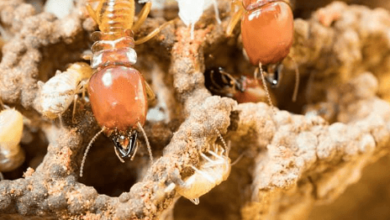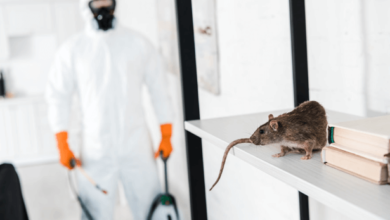The Importance of Septic Tank Maintenance

Many homes are not served by public sewers and use an on-site Septic Tank Maintenance and drain field to treat wastewater. The system must be maintained properly to protect groundwater from contamination.
Have a professional inspect your septic tank on an annual basis. The inspector will relay the sludge and scum layers, and advise when you are due for a pumping.
Pumping
Your septic tank is an underground, watertight container that collects all of the wastewater from your toilets and drains. The heavy solids settle to the bottom of the tank, where bacteria reduce them to sludge. The lighter solids rise to the top of the tank, where they form a layer of scum. The septic tank needs to be pumped periodically (every 3-5 years) to remove the excess sludge and scum from it. If the septic tank does not get pumped, these solids can enter the drain field and cause severe damage to your system and the environment.
To determine when your septic tank should be pumped, you can use a measuring stick or ask a professional to inspect and document the levels for you. Generally, your tank should be pumped when the sludge level is within 3’’ of the bottom of the outlet device.
Homeowners that host frequent parties, have many children, or use a garbage disposal more often than other homeowners may need to pump their tanks more frequently. Bleach, drain cleaner and other chemicals should never be dumped down a septic tank, as they can kill off the healthy bacteria that keep your septic system working properly.
Some products on the market claim to extend the time between septic tank pumping. However, these products simply add chemicals to the primordial ecosystem already in your septic tank, throwing it out of balance and disrupting its ability to break down the waste sent to it.
Inspection
One of the main reasons that homeowners need to perform regular septic tank inspections is to ensure that the septic system is properly treating household wastewater. A septic tank that isn’t treated adequately could result in a variety of issues, including clogged drains and backups, health risks, and environmental damage.
During an inspection, an inspector will examine the septic tank and all components to look for signs of corrosion, damage, or leaks. They will also check the drain field area for odors, wet spots, and surfacing sewage. If these are present, a tank replacement is likely required.
The condition of the septic tank’s baffles and filters is also important, as they are responsible for improving the removal and retention of solid wastes. They may need to be replaced if they become damaged or fall off during the pumping process. An inspector will also check the condition of the tank walls to make sure that they are intact and not cracked or broken.
A septic system inspection can include a flow test, which uses a dye to confirm that wastewater is being routed into the septic tank and not somewhere else on the property. A septic tank that is too small can cause problems as well, so an inspector will check the size of the current tank to determine whether it needs to be replaced.
Read also: Optimal Techniques In Bellevue For Effective Mold Restoration
Repair
A septic tank must be repaired as soon as any cracks in the concrete surface appear. A septic tank technician will have the cracked surface thoroughly cleaned and then apply concrete crack filler to the tank to seal the leaks.
All the wastewaters that flow from your home go into the septic system, including those from toilets, baths, sinks, and washing machines. These wastewaters contain disease-causing germs and environmental pollutants. As sewage flows into the tank, it forms a solid layer (sludge) and a lighter liquid layer of greases and fats (scum). Over time, these materials are decomposed by anaerobic bacteria in the tanks.
When the septic system doesn’t function properly, sewage backs up into your drains and toilets. It can also leak into groundwater supplies, contaminating them with dangerous organisms.
Keeping up with maintenance and being aware of how a septic system works can help you avoid these problems. However, some issues cannot be prevented.
Avoid flushing non-biodegradable waste items such as cigarette butts, cotton buds/swabs, and menstrual hygiene products into the toilet. These items clog septic systems and fill the tank with solid waste, making it more difficult for the bacteria to decompose them. Also, don’t pour chemical drain openers or paint removers into the septic system. These materials are highly toxic to the anaerobic bacteria in septic tanks and may clog the drain field.
Maintenance
Septic systems are designed to treat wastewater but can be damaged by neglect or improper use. Regular septic tank cleaning and inspections help to prevent clogs, wastewater backups and the release of untreated waste into the environment.
A septic tank is a buried, watertight container that holds all the wastewater from your home. Solids and oils settle to the bottom of the tank where bacteria reduce them to sludge, while the liquid wastewater (effluent) rises to the top of the tank where it is dispersed into a drain field or leach field.
In the event of a failure, a septic tank can cause wastewater to back up into your home’s plumbing or contaminate nearby drinking water wells and waterways. Failing septic systems can also increase the amount of nitrogen and phosphorus in water bodies, which causes excessive algae growth and depletes oxygen that fish and other aquatic organisms need to survive.
To determine when it is time to have your septic tank pumped, uncover the inlet and outlet access covers. A 6’ pole is handy for measuring the sludge layer; if it is within 3 feet of the bottom of the inlet baffle or within 12 inches of the outlet baffle, it is time to have your septic system pumped.







